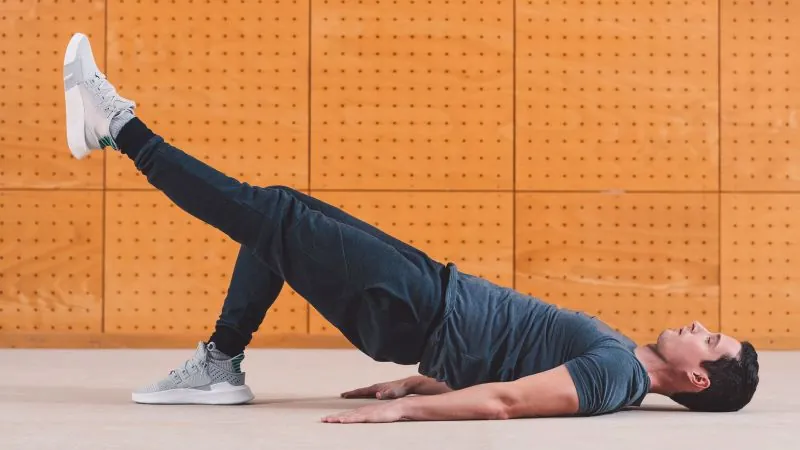
Unlock the Secret to Pain-Free Knees: How Pilates Can Revolutionize Your Recovery!
2024-11-10
Author: Wai
The Alarming Facts About Knee Pain
Recent research highlights that a staggering 25% of adults experience knee pain, a 65% increase over the past two decades, as noted in a 2018 report from the American Family Physician. Common culprits include osteoarthritis, especially prevalent among women and older individuals, but injuries, obesity, and muscle imbalances also play significant roles.
Dr. Adam Kreitenberg, a seasoned rheumatologist at Rheumatology Therapeutics Medical Center in California, emphasizes the necessity of accurate diagnosis, stating, “It’s crucial to determine if knee pain stems from issues like fractures or tears, as treatments can vary widely.”
Are You Set Up for Success?
Biochemist Shari Berkowitz explains that many knee issues arise from poor biomechanics. Misalignments over time can lead to severe injuries or accelerate degenerative conditions like osteoarthritis. Strengthening the muscles around the knee can be transformative. In fact, a systematic review from Musculoskeletal Care revealed that Pilates exercises significantly reduce pain from knee osteoarthritis and other musculoskeletal issues.
The Science Behind a Stronger You
Our knees endure an incredible amount of stress—absorbing nearly 1.5 times our body weight walking on flat surfaces and an astonishing 346% when descending stairs, as highlighted by a Journal of Biomechanics study. This stress necessitates robust muscles in our quadriceps, hamstrings, glutes, and calves.
Kreitenberg points out, “Everything is connected. A weakness anywhere can lead to poor alignment and excess strain on your knees.” This is where Pilates shines, as its low-impact movements promote overall strength, mobility, and proper alignment.
Your New Go-To Pilates Routine: 5 Essential Exercises for Knees
1. Shoulder Bridge Prep: Lie on your back with knees bent. Engage your core and lift your pelvis while keeping your feet parallel. Hold for five deep breaths.
2. Half Roll-Down: Sit with knees bent and feet flat. Round your spine and roll back, then return. This helps strengthen your core and lower back.
3. Squats: Stand tall, lower yourself as if sitting back into a chair, keeping your heels planted. Maintain alignment between your knees and feet.
4. Straight Leg Raise: Lie on your back, bend one knee, and lift the opposite leg to the height of the bent knee. This strengthens your hips and thighs.
5. Standing Hamstring Curl: Hold onto a stable surface and curl one leg behind you, holding for several seconds. Alternate legs.
Aim for three sets of 10-15 repetitions for these exercises. Incorporating equipment like the Pilates reformer can also enhance your practice, allowing for more precise movements and alignment.
The Bottom Line: Your Path to Recovery
While incorporating these Pilates exercises could potentially alleviate 20-30% of your knee pain, they are not miracle solutions. Important lifestyle changes include wearing proper footwear (say goodbye to flip-flops!), eating a balanced diet rich in protein, prioritizing sleep for recovery, and maintaining an active lifestyle.
Remember, these exercises serve as a supplement to a broader strategy for managing knee pain. Always consult with a healthcare provider before starting any new exercise program, particularly if you have pre-existing conditions.
So, are you ready to reclaim your active life and kick knee pain to the curb? Start your Pilates journey today! ✨

 Brasil (PT)
Brasil (PT)
 Canada (EN)
Canada (EN)
 Chile (ES)
Chile (ES)
 España (ES)
España (ES)
 France (FR)
France (FR)
 Hong Kong (EN)
Hong Kong (EN)
 Italia (IT)
Italia (IT)
 日本 (JA)
日本 (JA)
 Magyarország (HU)
Magyarország (HU)
 Norge (NO)
Norge (NO)
 Polska (PL)
Polska (PL)
 Schweiz (DE)
Schweiz (DE)
 Singapore (EN)
Singapore (EN)
 Sverige (SV)
Sverige (SV)
 Suomi (FI)
Suomi (FI)
 Türkiye (TR)
Türkiye (TR)